Exploring food, architecture in Costa Rica
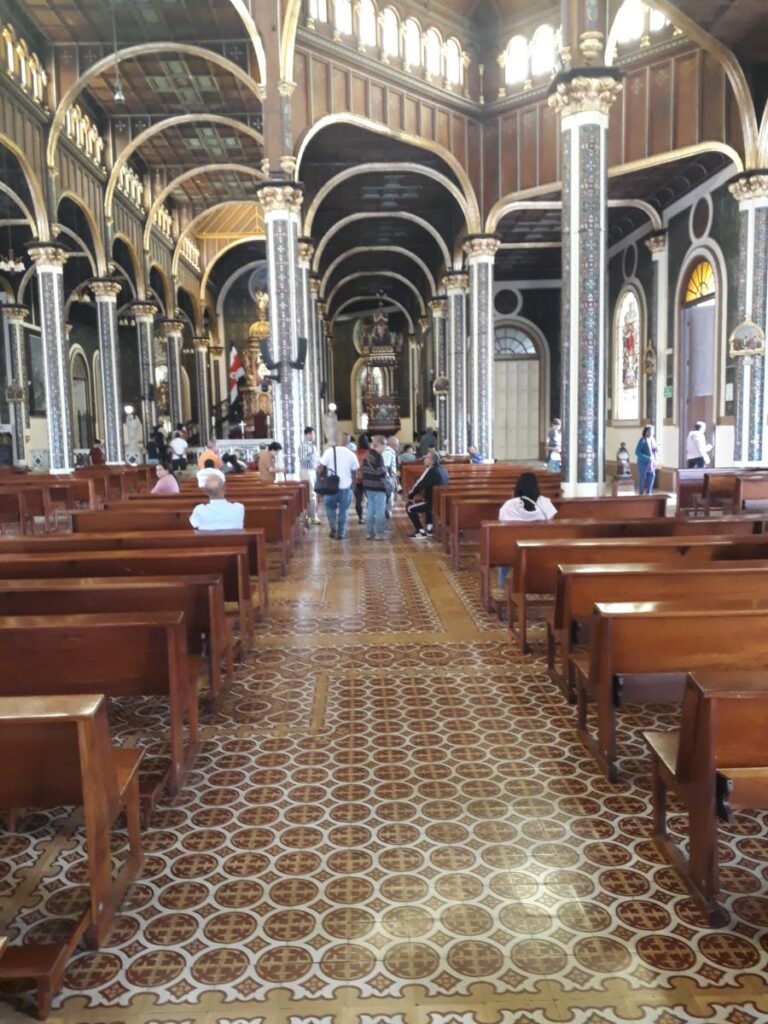
In part two of this three-part series, Jan Westmaas and his tour group get a taste of the food and architecture of the town of Irazu, Costa Rica, with an unplanned visit to the volcano museum.
Prodded by my daughter Nadia who had taken groups from Trinidad to Irazu on a couple occasions before the pandemic, I managed to convince our group to pay an impromptu visit to Federico Gutierrez’s private volcano museum. Its location is just about 15 minutes from Irazu. I thought that a half-hour delay before getting to Cartago for lunch will be worth far more than its weight in gold, or, to be facetious, in volcanic ash.
Indeed, it was just as I had hoped!
“The highlight of the tour,” one traveller later confided to me. Gutierrez ran jubilantly out of his restaurant to greet and usher us – a bus load of Trinis – into his museum. A restaurant and souvenir shop are attached to the long-established family Hacienda called Nochebuena. With rich, volcanic soil in abundance, it specialises in dairy and vegetable farming. With this museum, Gutierrez, entrepreneur extraordinaire and a passionate lover of volcanoes with expert knowledge to back it up, filled a major void in the area.
There was nowhere that visitors to Irazu could turn to for information except what they had seen on the few billboards around the volcano. In 2006, Federico proudly opened what is, arguably, the country’s first museum of its type. Under a time constraint, we missed the 20-minute video at the start of the tour of the museum. Nadia had informed me that it described in English sub-titles Costa Rica’s place in the infamous Ring of Fire – the string of volcanoes and sites of earthquakes or seismic activity around the edges of the Pacific Ocean.
Not seeing the video was no real loss. Gutierrez’s informative, interactive and comprehensive delivery on Irazu and volcanoes in general more than compensated for any perceived shortfall.
“Where you guys come from?” he asked.
“From Trinidad,” came an enthusiastic response from the group.
“You have volcanoes there?” he queried.
“Mud volcanoes,” many responded in unison.
"And why are there so many volcanoes in Costa Rica and none in Brazil?” Gutierrez questioned.
“Tectonic plates,” responded one member of the group.
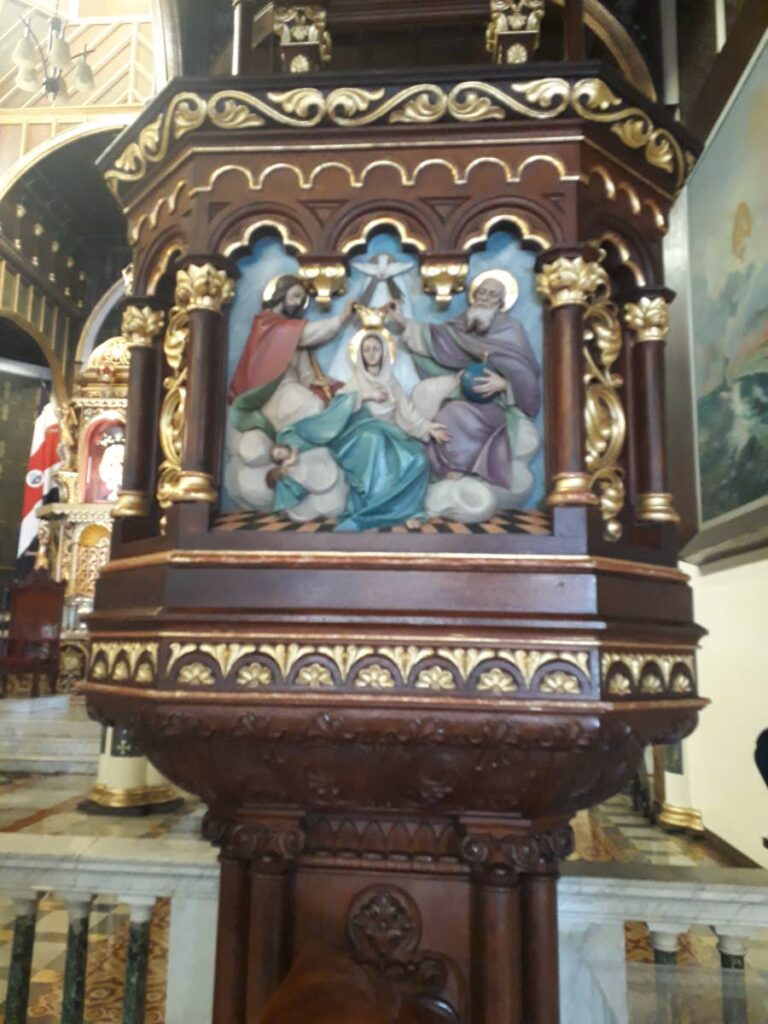
“Yes, you are right. Costa Rica is influenced by the Pacific tectonic plate,” Gutierrez affirmed, as he pointed to a map to illustrate his point. He conducted his tour with the aid of exhibits, including newspaper articles outlining the history of early volcanic activity, the legends surrounding the origin of volcanoes, three-dimensional models, including one of a miniature highland cottage and another of the typical fauna of the area. At US$2 a head (a special for our group), this was a steal of a deal.
Getting closer to midday, we resumed our descent of the stunningly beautiful mountainside until we reached Cartago. It was a relatively short journey. It lasted less than an hour. As the country’s first capital under Spanish rule, documentary evidence suggests that this was a city that had been endowed with fine colonial architecture. Unfortunately, Irazu’s eruption in 1723 followed by earthquakes in 1841 and 1910 took their toll.
Today it’s a mundane, commercial and residential town. Architecturally and spiritually, its saving grace is that it is the home of the Basilica of Our Lady of Angels (Nuestra Senora de Los Angeles or more popularly known as La Negrita.) A Basilica is a Catholic church recognised and given special privileges by the pope.
Many myths and legends have been told about Costa Rica’s black Madonna. Most Ticos, particularly descendants of the pardos (the black and mixed-race underclass during Spanish rule) as well as afro-descended Jamaicans who came to work in agriculture and on the construction of the railway from the Central Valley to the new port of Limon on the Caribbean coast in the early 20th century, will not dispute the following narrative.
Without going into all the details, on August 2, 1625 a young indigenous woman, while collecting firewood, found an image of Our Lady with her babe in arms stamped on a stone. In 1824 La Negrita was officially declared the patron saint of Costa Rica. Every year on August 2 it is estimated that over two million pilgrims undertake the challenging pilgrimage or romeria from San Jose to Cartago, some 22 kilometres, to pay homage to their patron saint.
Against a background of majestic mountains and fronted by a large, open square, stands the Basilica. Its towering ceilings, its octagonal dome structure, stained- glass windows, ornate side chapels, brightly coloured life-size sculptures of saints and carved cedar wood altars, befit its status as a place of veneration dedicated to the patron saint of Costa Rica. In an area prone to earthquakes and volcanic eruptions, it is no surprise that the Basilica has been restored or rebuilt many times since its first construction in 1639. The current structure dates back to 1939.
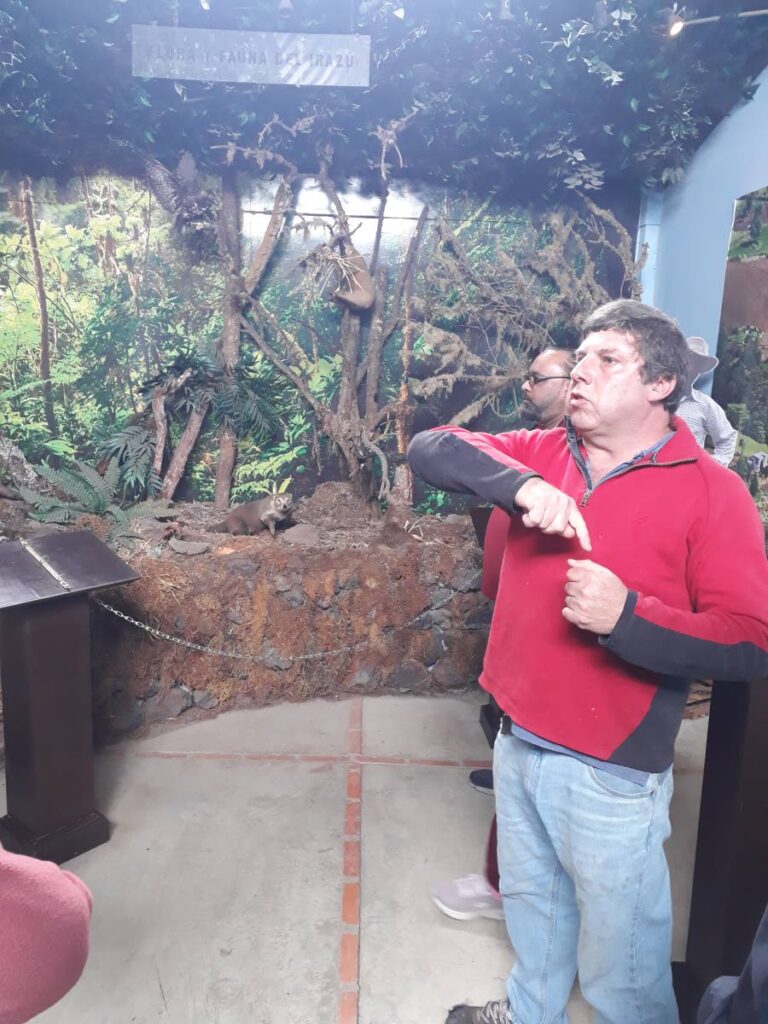
In case you’re wondering, Catholicism is the state religion but the country’s constitution guarantees absolute freedom of worship. Among the Christian community, recent data shows that 76.3 per cent of Ticos identify as Catholic, 13.7 per cent as evangelical Christians, 1.3 per cent as Jehovah Witnesses and 0.7 per cent as Protestants. Apart from this, there are small communities of Hindus (there’s a temple in Monteverde), Jews, Muslims and Costa Rican converts to the Hare Krishna Movement.
In addition, there are numerous meditation centres located mainly in green zones all over the country. One that stands out is Pachamama. It’s located in an idyllic forest setting in the province of Guanacaste on the Pacific coast. It attracts many spiritual searchers from all over the world, including disciples of Osho like my elder brother Frederick (Dharmbodh), author of Glimpses of a Mystical Misfit. In it he described the experiences he had in Pachamama on the two occasions he spent time there before the pandemic.
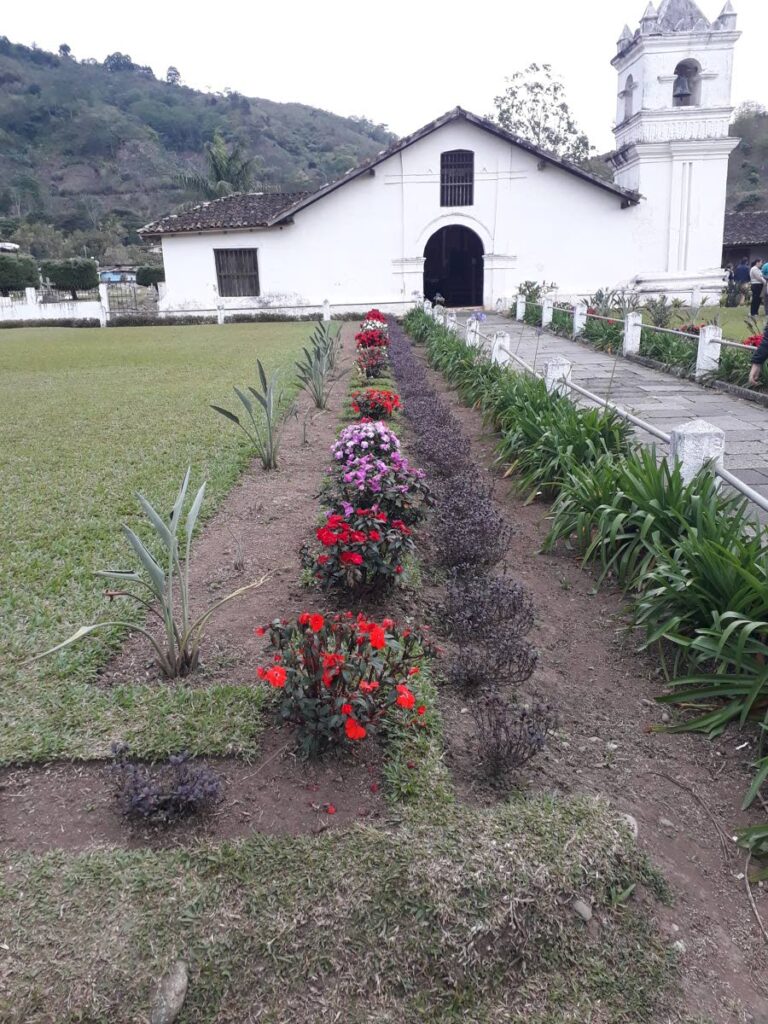
After having lunch at a restaurant opposite the church square, we continued to the next stop on our itinerary – the village of Orosi. Here the oldest functioning church in Costa Rica is located. A mere half hour’s drive from Cartago, Orosi simply rocked with good vibes. Its gardens, its laid-back, rural character and, most of all, its photogenic church built in the 1700s, will charm the most insensitive of us.
Some of us ventured inside. Its Terra cotta tiled roof supported by the original, sturdy, huge, hand carved wooden pillars, the few antique wooden pews, adobe walls and a glitteringly beautiful hand carved altar made a deep impression on me. I am pretty certain it impressed the others. The look on their faces shouted "oohs" and "aahs" to the heavens. Unlike the church of Our Lady of the Angels, this church survived everything that nature had thrown at it. It is indeed the same church that was built in the 18th century, barring the odd bit of restoration. I then wandered outside with others to experience the ambience in the garden. There I was greeted by brilliantly-coloured shrubs dancing joyfully on neat beds laid tastefully in sections of the church’s healthily green lawn.
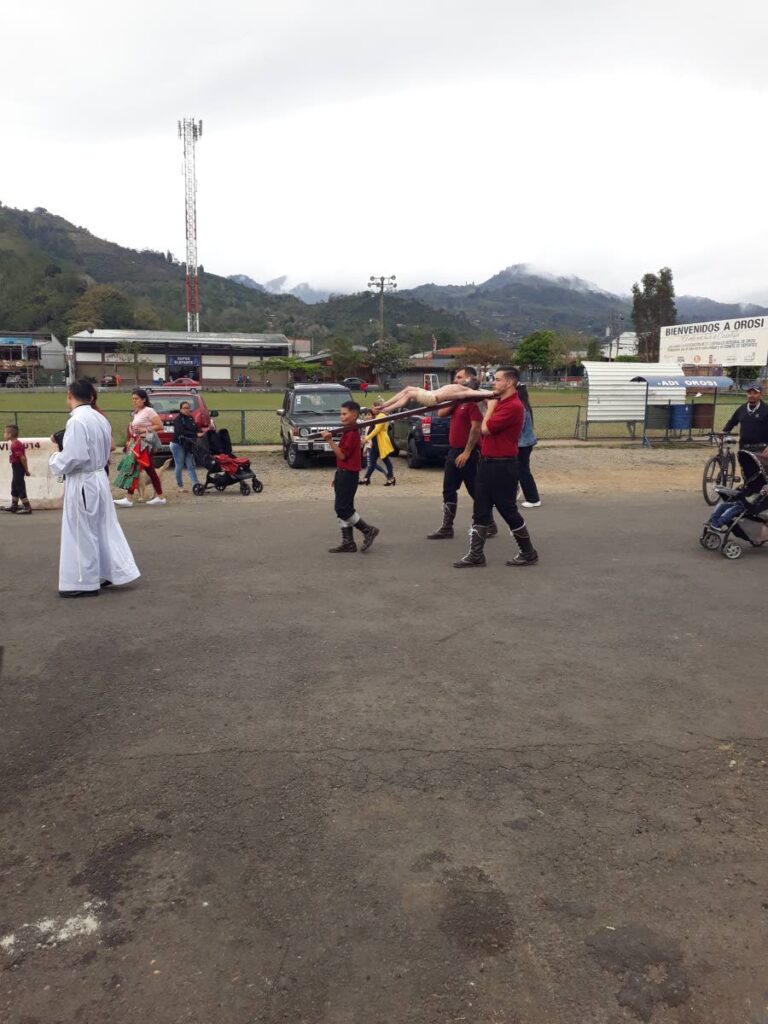
At some point, Nalini, a widely-travelled, sensitive person, on her maiden journey with Westmaas Touring, asked me if I was hearing a strange sound in the vicinity. I was, but neither of us could decipher what it was and from where it came. Soon came the answer. It was Jueves Santo (Holy Thursday) and the town’s music band, with drums throbbing, was leading the procession past the church with an effigy of Jesus Christ carried on the shoulders of four of the faithful. After paying our respects, by mid-afternoon we boarded our bus and left on a one-hour journey back to Hotel Presidente in San Jose.
The following day, Viernes Santo (Good Friday,) we were due to leave San Jose for Liberia via Sarchi, a distance of 225 kilometres. From Liberia to the Nicaraguan border are another 150 kilometres, a journey not on our itinerary on this occasion. In 2007, on a Central American coach tour from San Jose to Guatemala and back, I had done this segment with a group of 45 Trinis. You can read about the Nicaraguan part of that tour entitled Ortega’s Dilemma in chapter eight of Out of the Box, Tales of Travel, 1972 to 2013.
Look out for part three in next Sunday's Newsday

Comments
"Exploring food, architecture in Costa Rica"